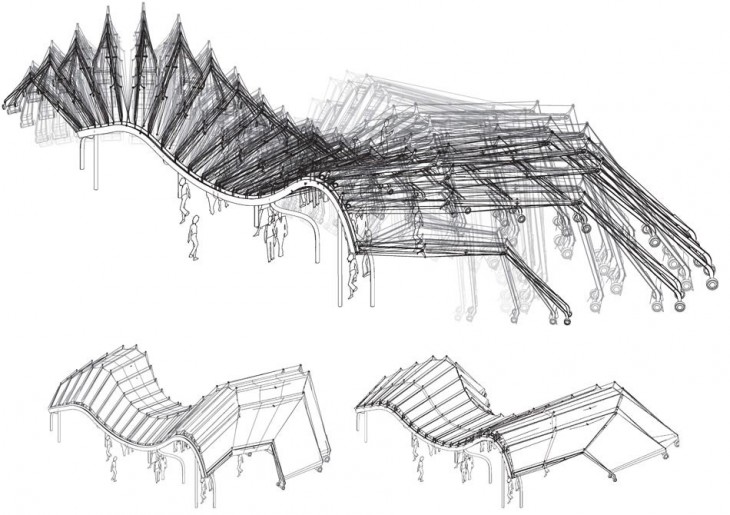Resume – D. Thomson, on growth and form.
In this text Thomson is describing his method of comparison of forms through an analytic proposal based on the use of a grid of coordinate system. This geometric-based method allows the comparison of similar species in the same zoological family and gives space to interesting considerations.
By using the geometric instrument of a cartesian grid, he was able to compare shapes and the variations of shape in space. Thomson brings many examples of variation using as subject different types of leaves, and he shows how the deformation of an image using the grid, using mathematical parameter, is noticeable also in real world subject. So he establishes a connection between mathematic and real world, using mathematical instruments to describe living phenomena.
This fact permit to describe reality using parameters, and understand how parameters act on shapes. If this is an interesting statement in drawing and physical terms, once applied to living beings permit to lead towards very interesting conclusions.
For instance, comparing bones of different species, he found out that every type is adapted to dimensions and forces that act on the anatomical part. So bones’ structure of a horse is similar to the goat one, but due to force acting on it, they presents differences in proportions.
But the most interesting reflection is the one regarding the variation of type in each subject, directly related with the previous consideration. If there’s a link between different species in anatomical terms, it is also true that every subject of a specie have different attributes, in terms of shape and physical characterization.
Thomson said that those variations are due by environmental factors, elements defined as forces and that act on the subject, such as gravity force.
This consideration is very important because represent one step further in Darwin’s theory of evolution, relating not only each spec, but every single being to environment.
Considerations
This text can be inspiring for architects because nowadays we are developing tools to create a new kind of architecture, conceived in mathematical terms and potentially interacting with a huge amount of external datas. Architecture nowadays should be an expression of local culture, deeply related to environment.
Why not imagine architecture as a living being, a mathematical definition that deploys its formula in space according to environment, using input parameters in order to generate and adapt its form?

Atmos studio – Wingscape